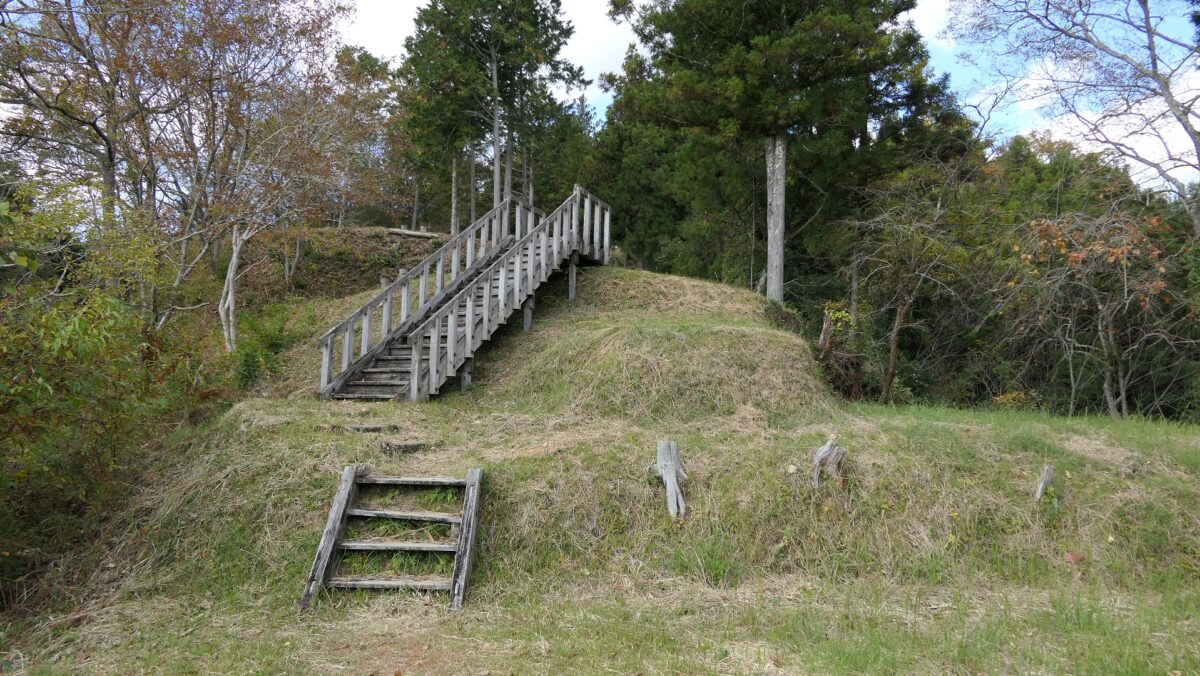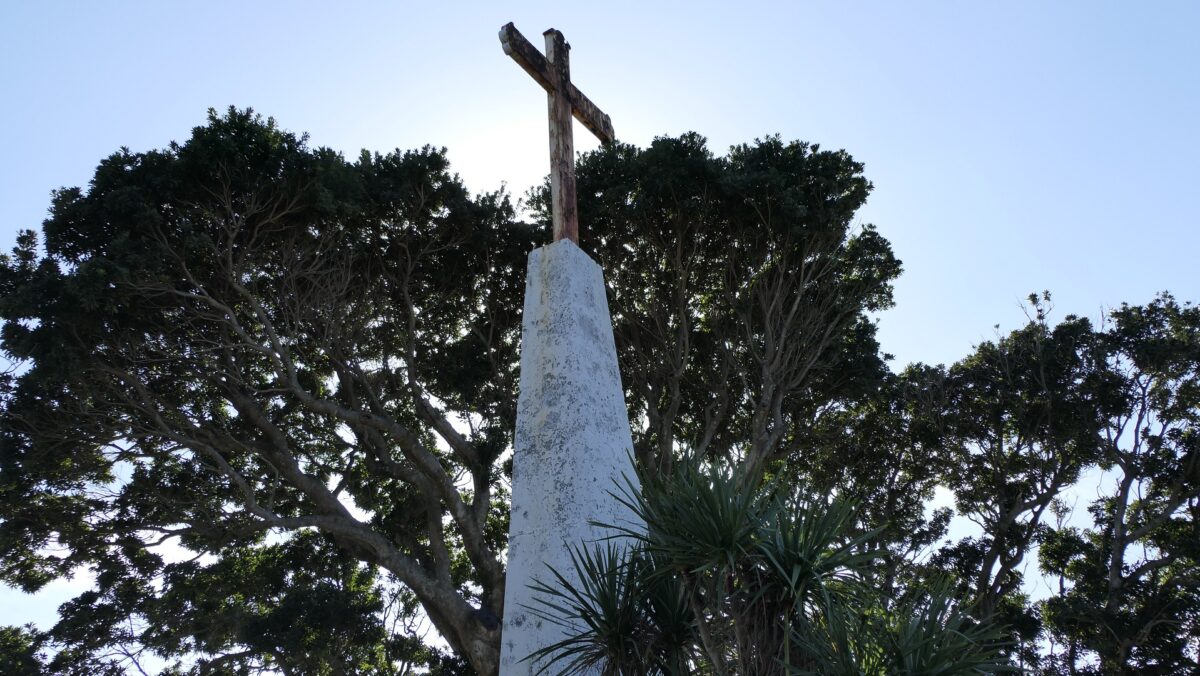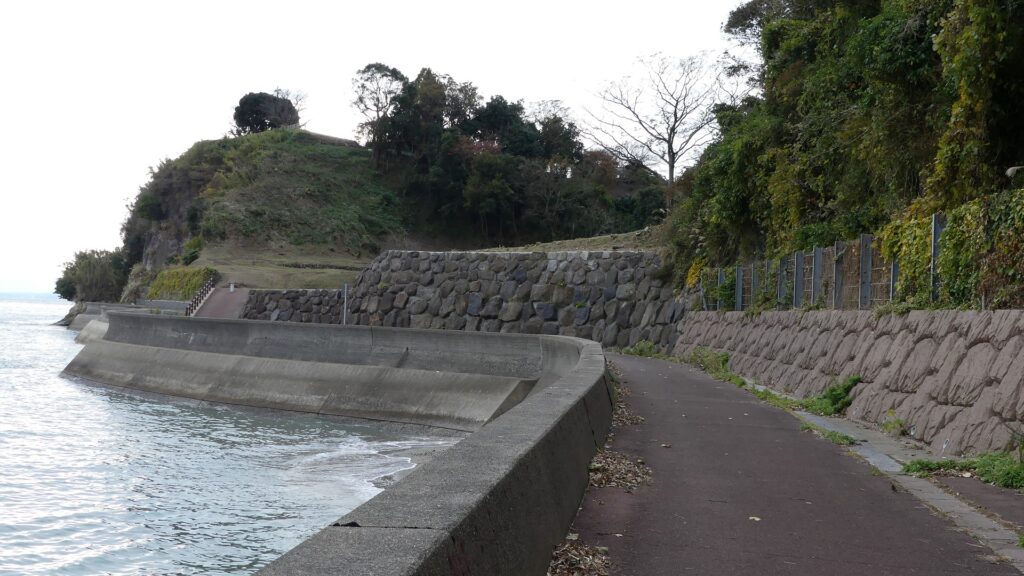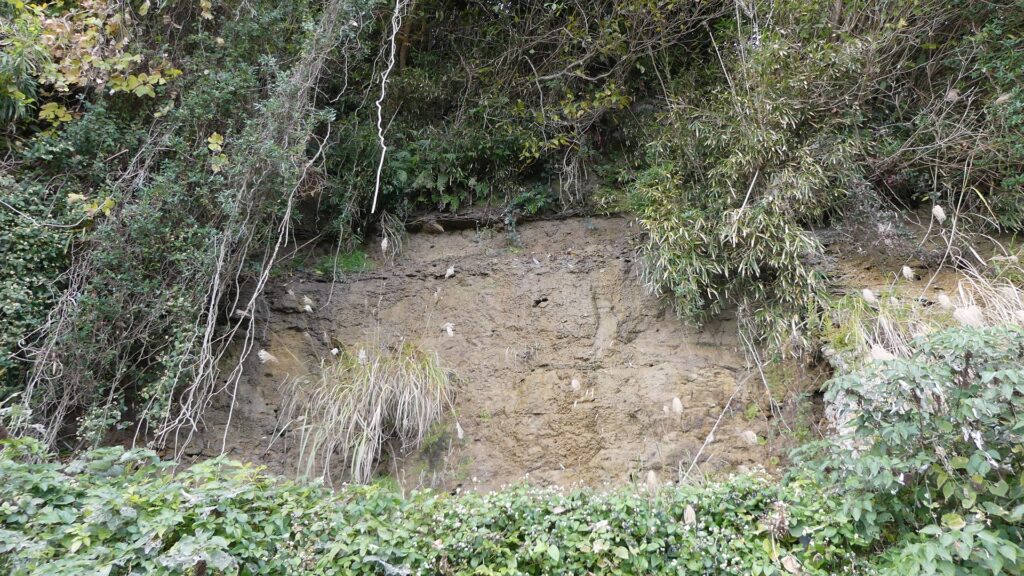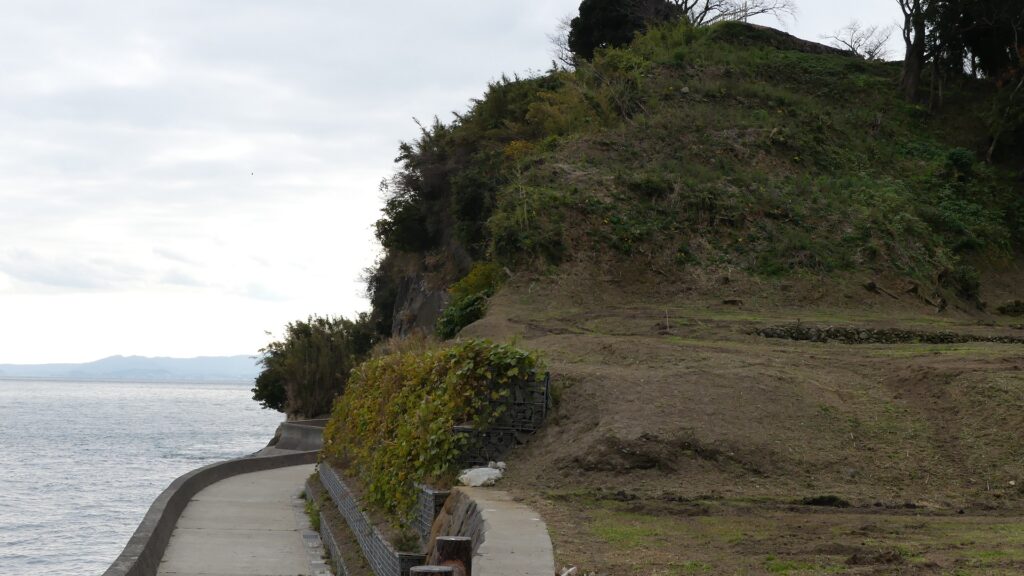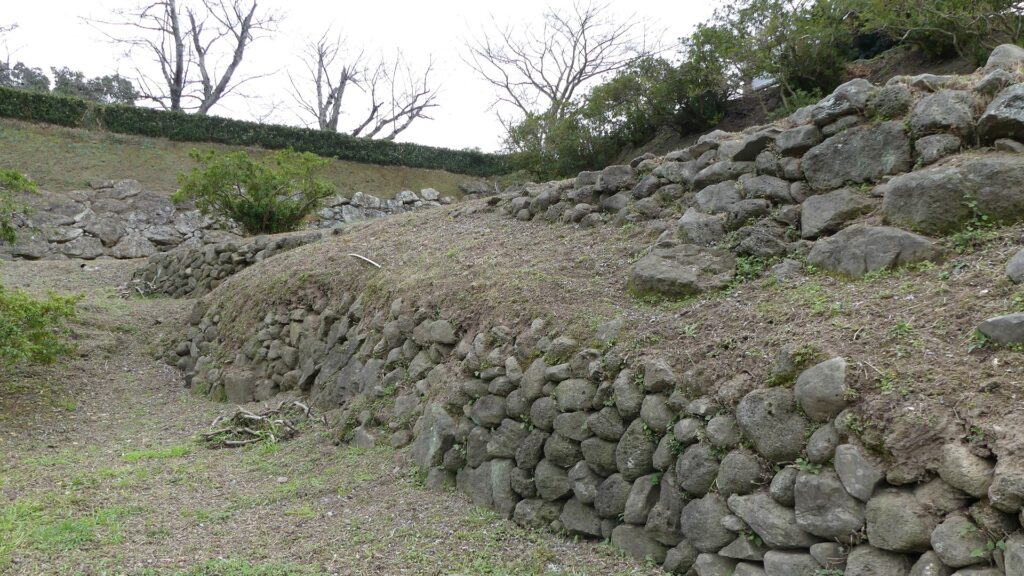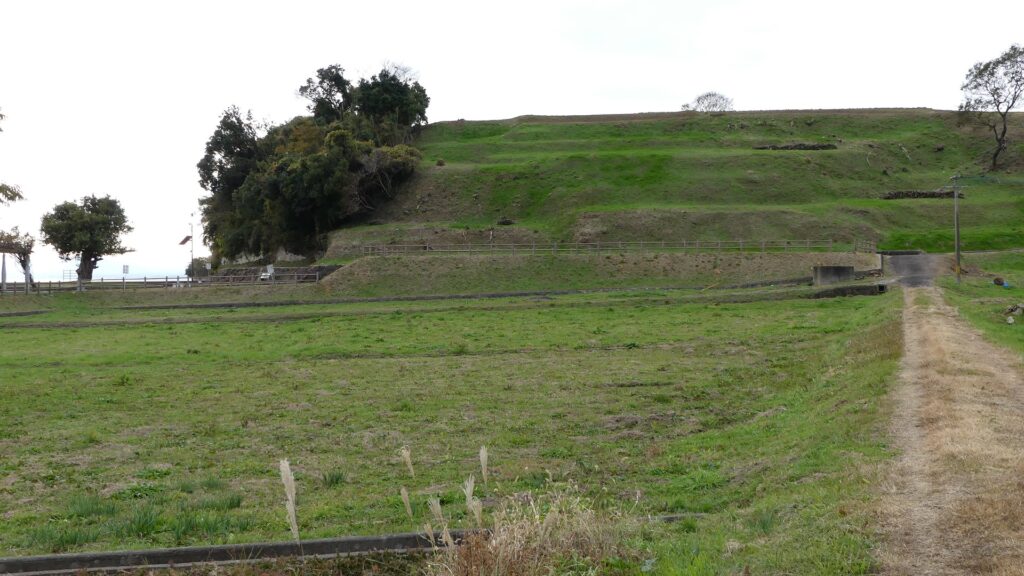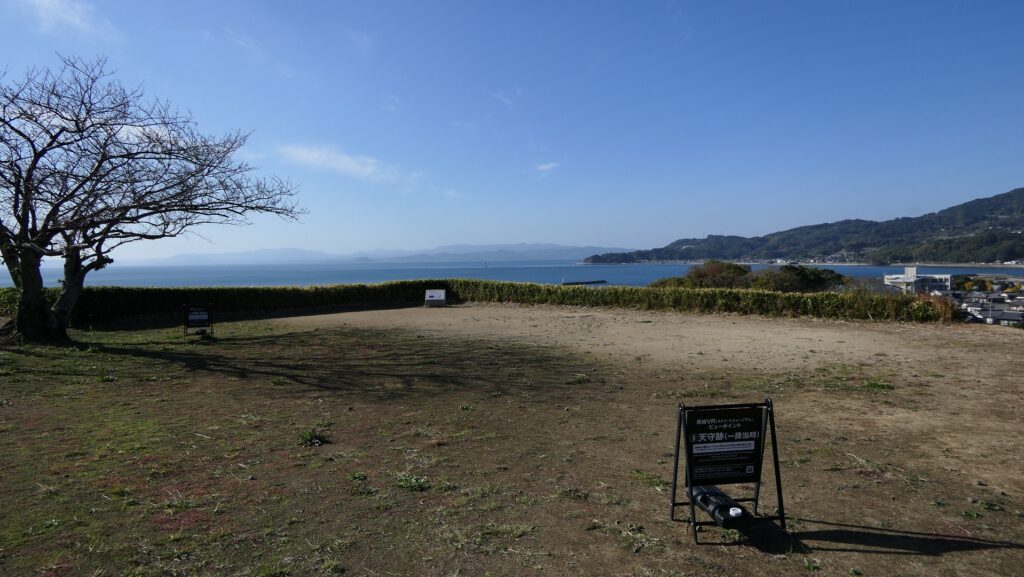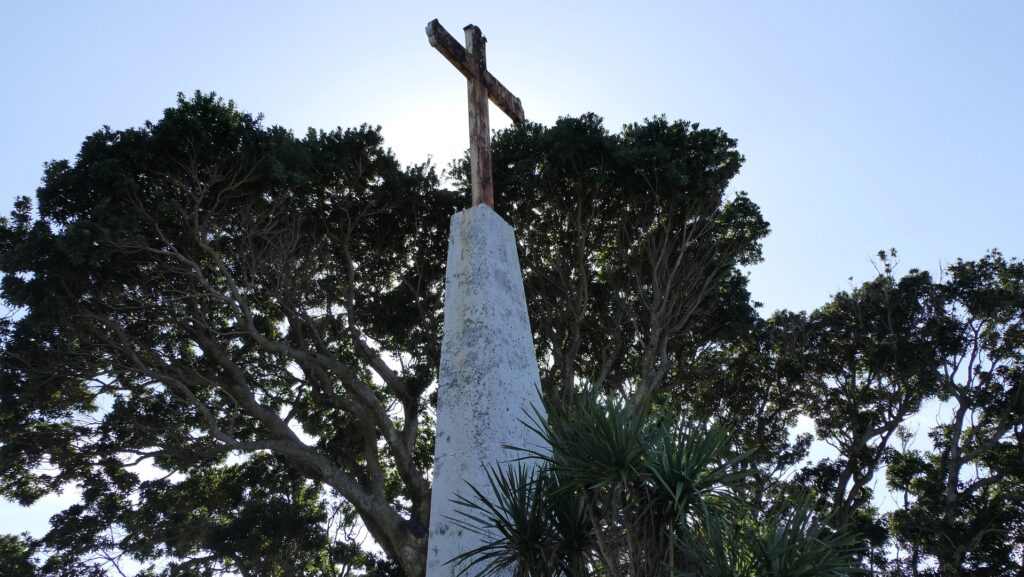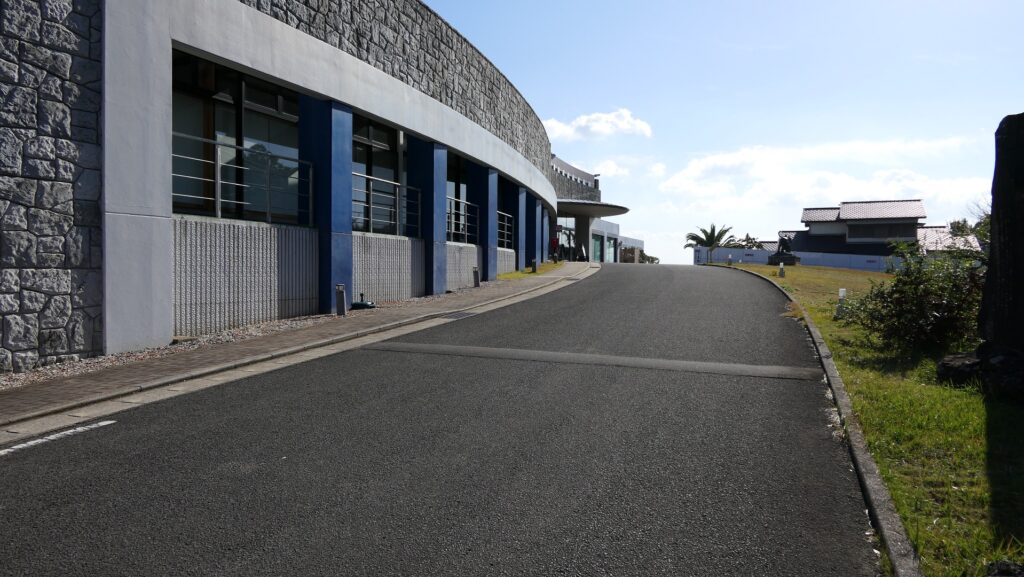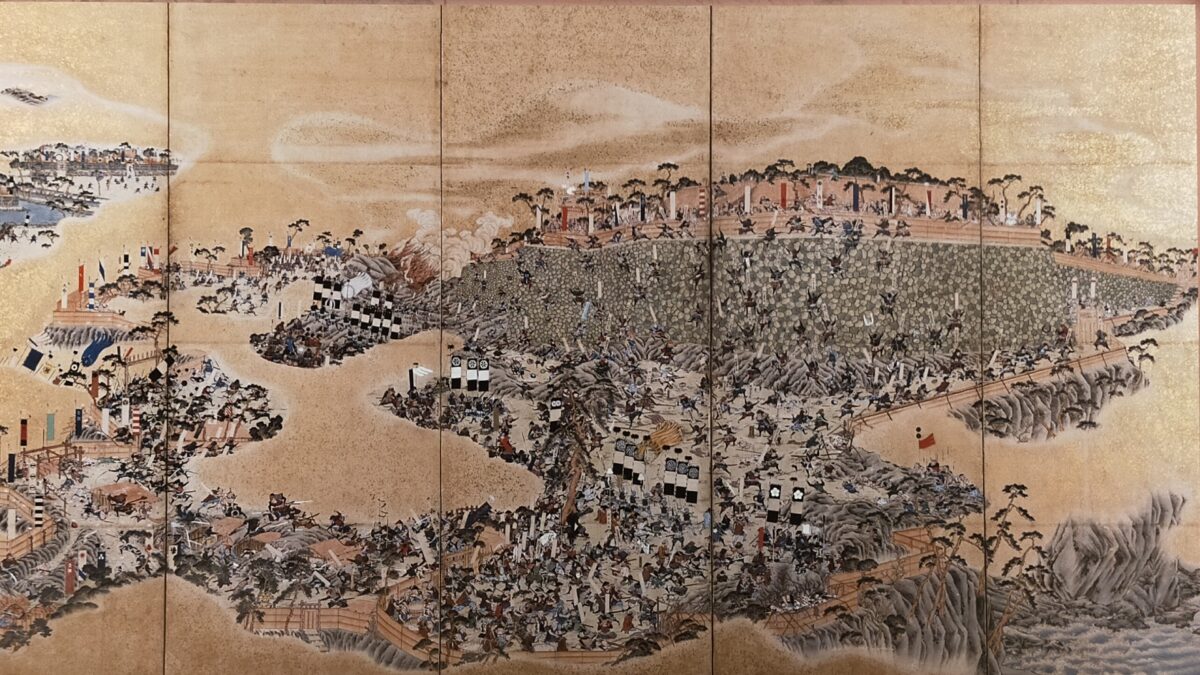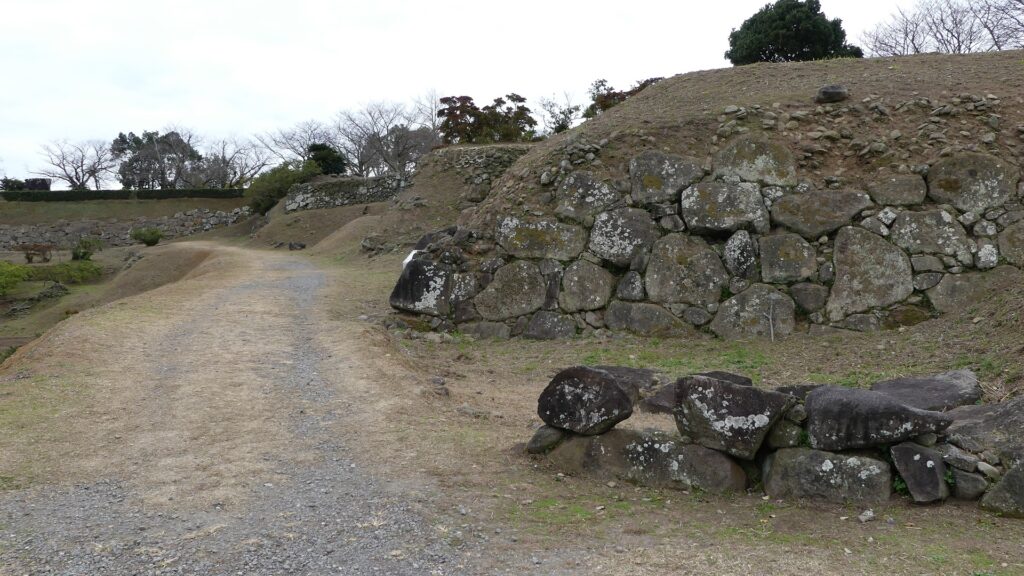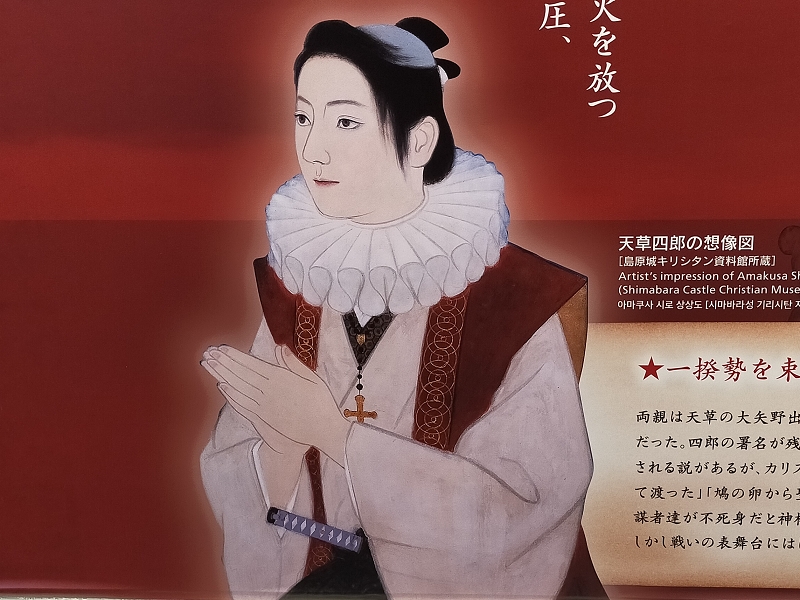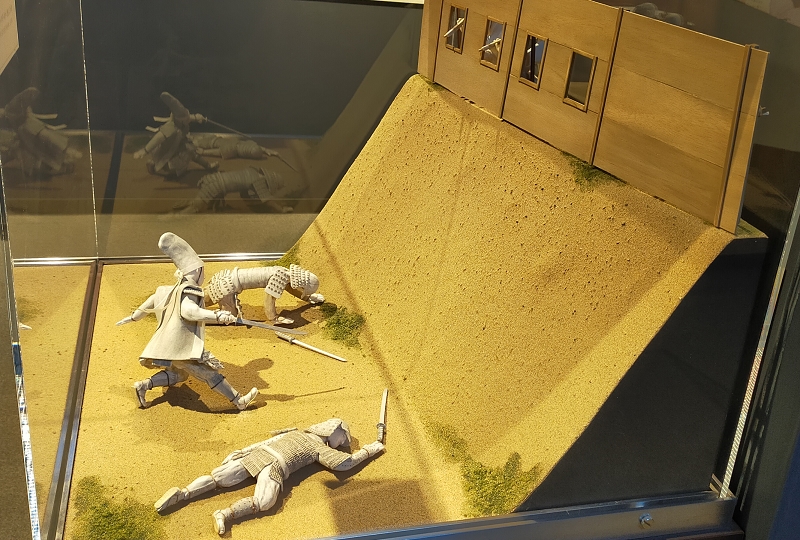Features
Unique Natural terrain
Today, the ruins of Kagomori Castle have been re-developed for visitors. If you drive to the ruins, you can park at the south of the mountain, which is below the upside-down U shape. After that, you can first walk to the bottom of the valley called Furogadani, which is likely the inside of the U shape. You will probably feel like you are entirely surrounded by the ridges of the mountain, which has very unique terrain. You can still see the well of the castle, filled with water, but probably can not be consumed now.
The aerial photo around the castle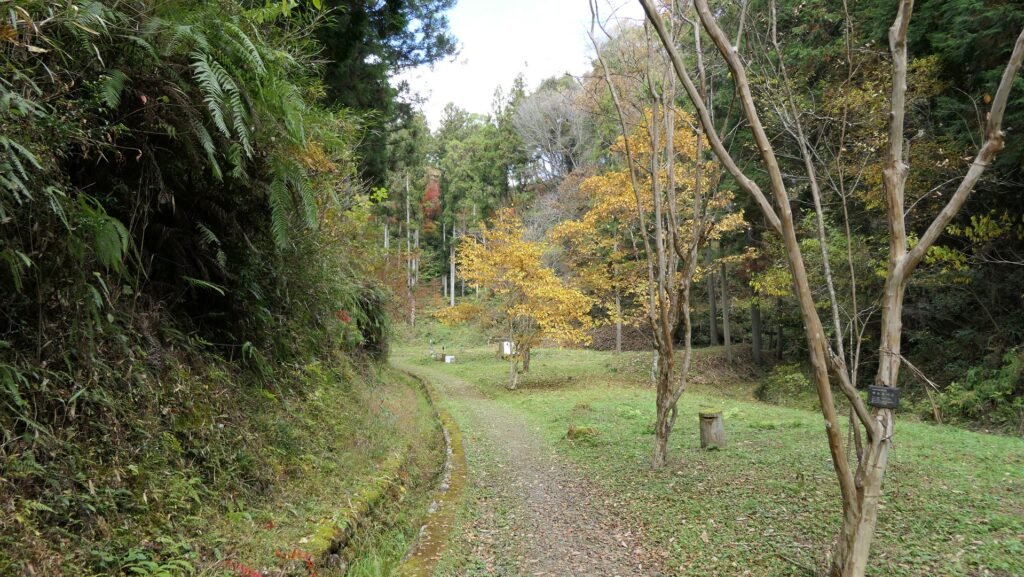

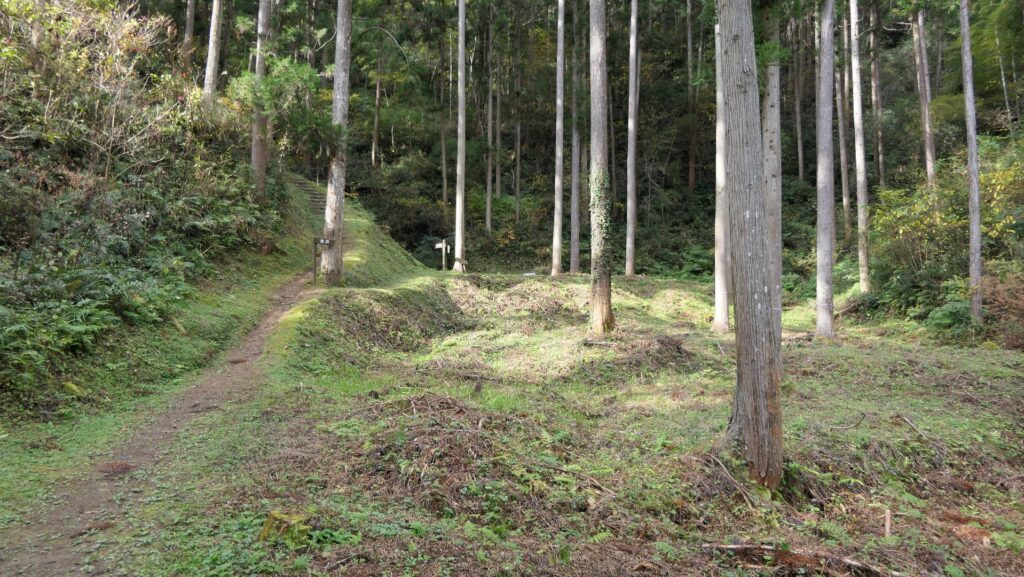
Enclosures are in line on U shape Ridge
Visitors typically climb up to the western edge of the U shape from the valley through the steep zigzagged trail. You will reach the Western 10th Enclosure, which is approximately 70m above the bottom of the valley. There is the restored gate, a barrack with horse stable and earthen walls, thanks to the results from the excavations. The excavation team also discovered that the enclosure had the hall turrets, which was called Tamon-Yagura, beside the earthen walls. From there, you can see the area around including the Shinjo Enclosure, which is located on the opposite edge of the U shape. Overall, this enclosure was the pivot point of the castle.
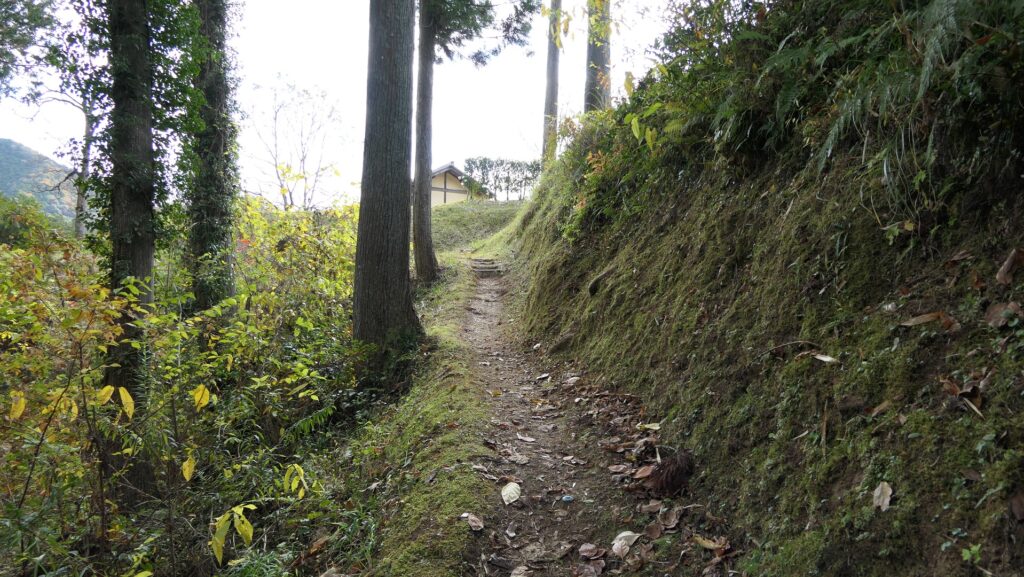
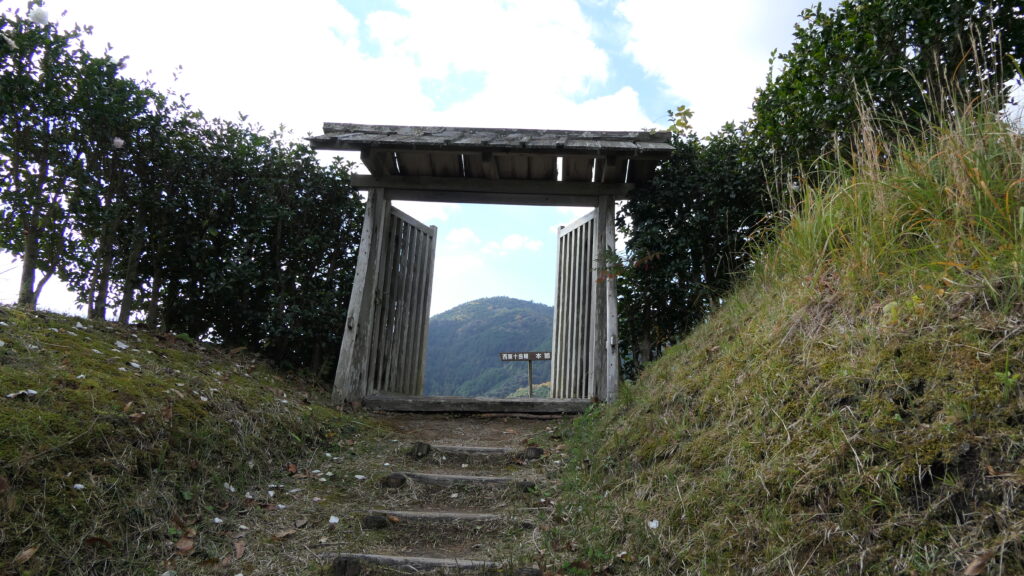

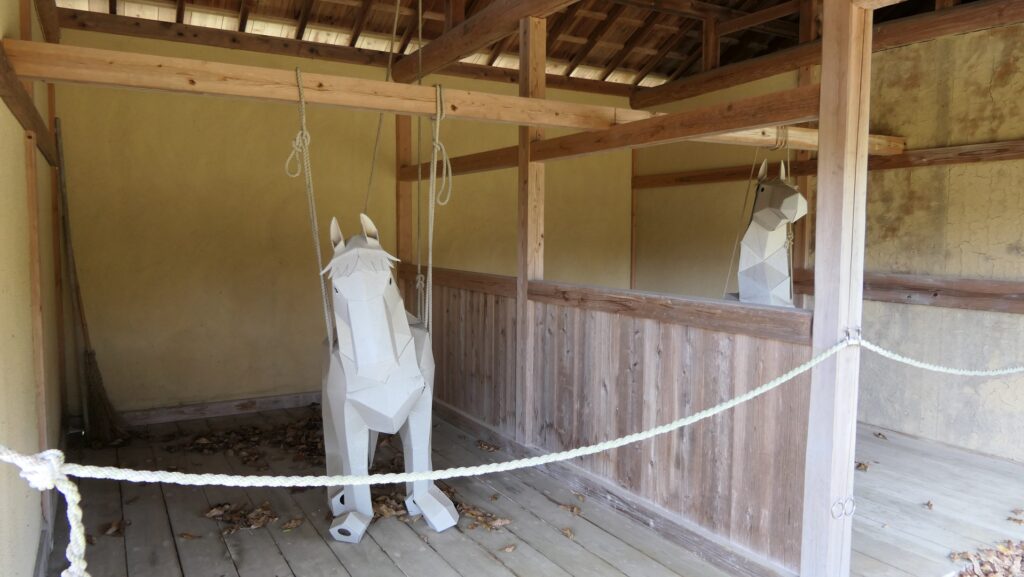
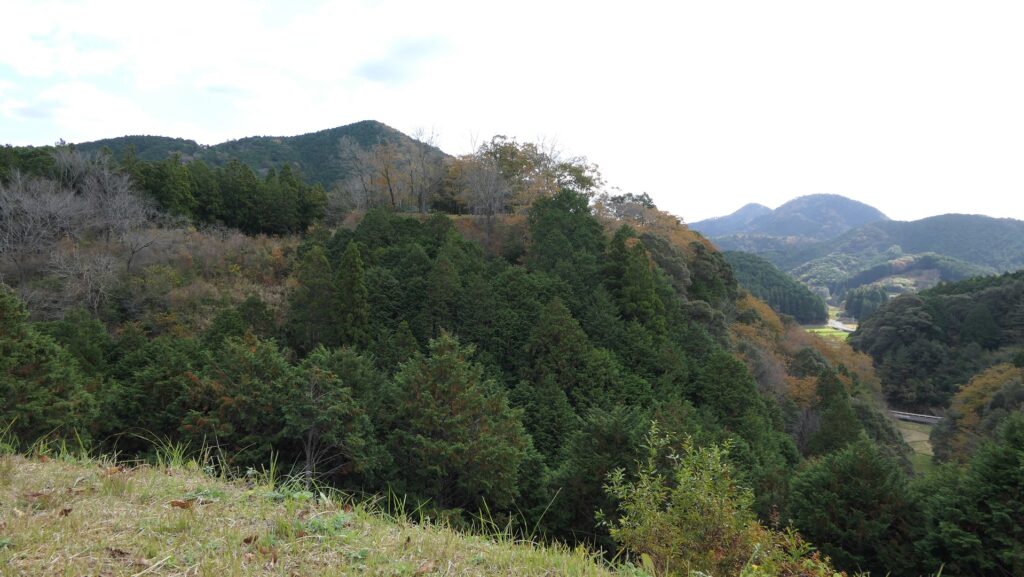
If you want to get closer to the center of the castle, the Main Enclosure, you will have to go through as many as eight enclosures. Each enclosure is small, but all are in a line on the long and the narrow ridge of the mountain. These enclosures were divided by artificial ditches called Horikiri. The route to the Main Enclosure is much narrower and goes along the side of these enclosures. If enemies were to attack the castle using this route, they would have found it very challenging. However, visitors today can walk on the same route safely because steps and bridges were installed.
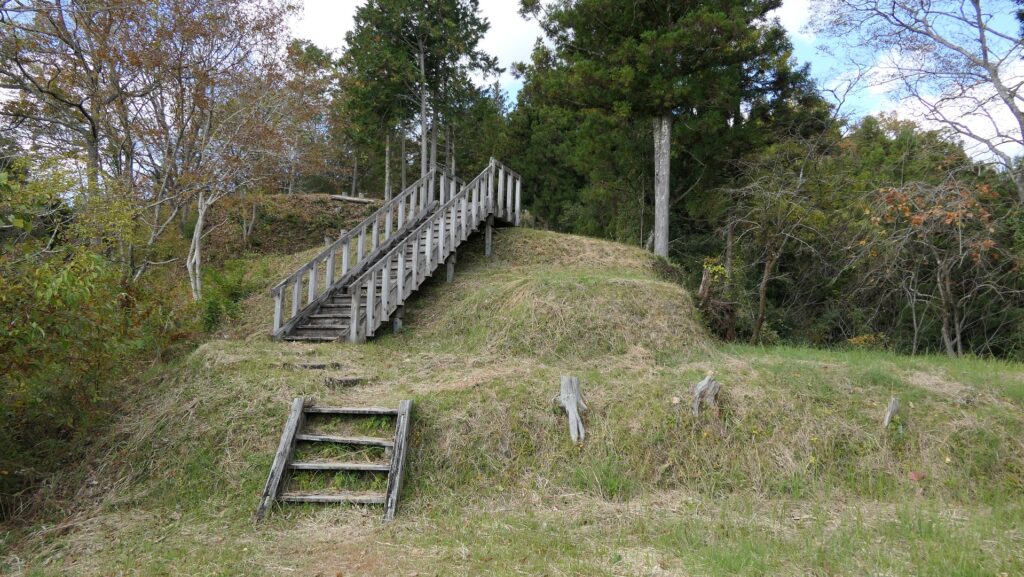
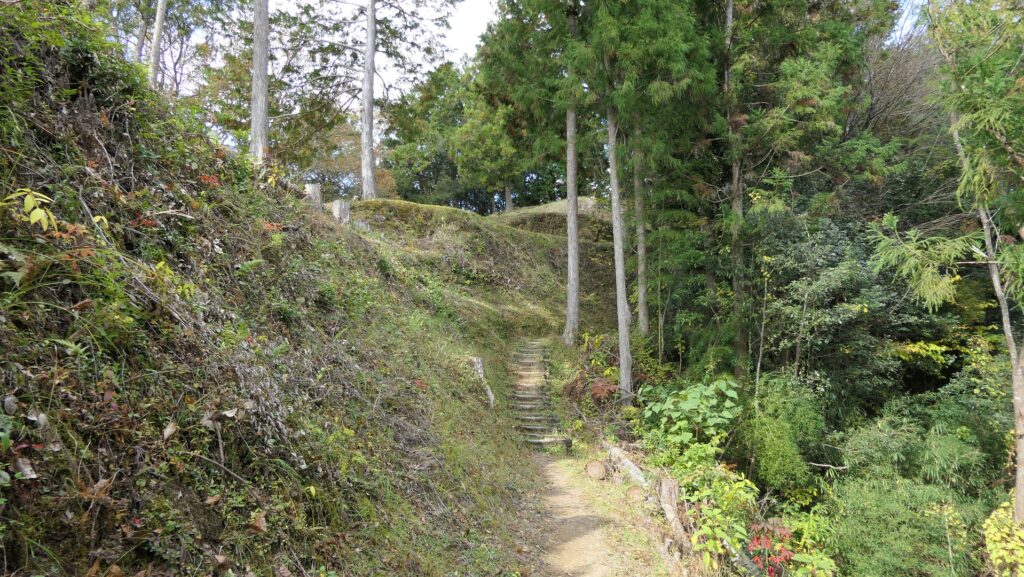
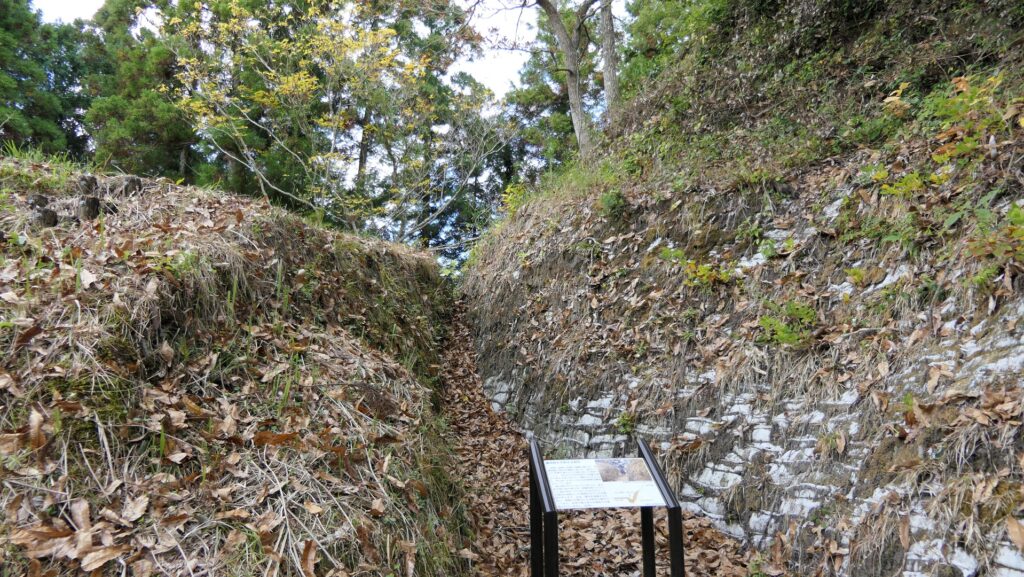
Main Enclosure, Center of Castle
When you reach the entrance of the Main Enclosure, you will find some remaining stone walls. They are part of the alternative entrance called Koguchi, which replaced the old ditch in the later stage of the castle. The Main Enclosure is on the top of the mountain (approximately 90m from the foot) and the center of the U shape ridge. From here, you can enjoy views of Matsuno Town in the north and both edges of the ridges, the Sinjo Enclosure and the Western 10th Enclosure you passed through. This was ideal for the headquarters.


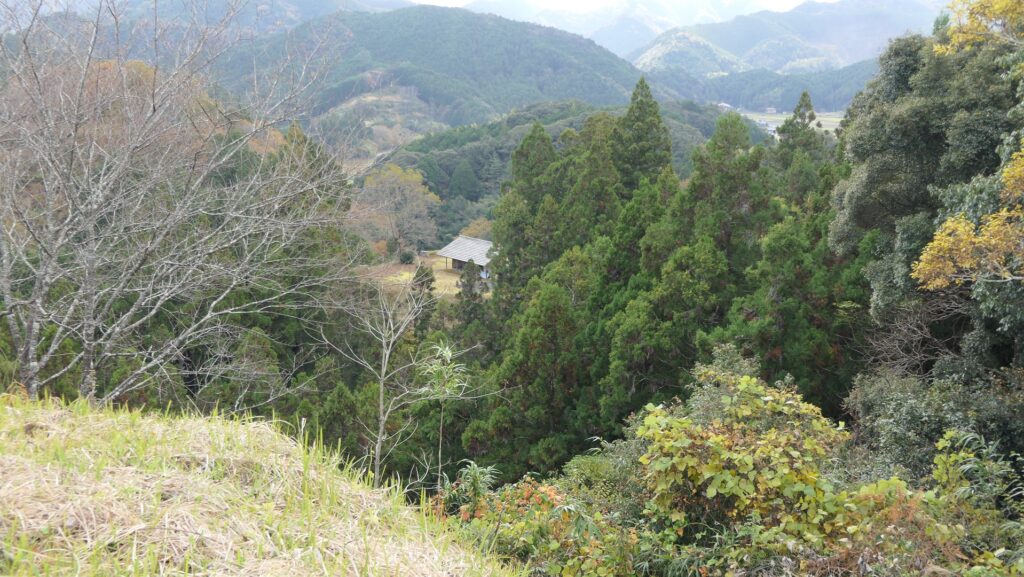
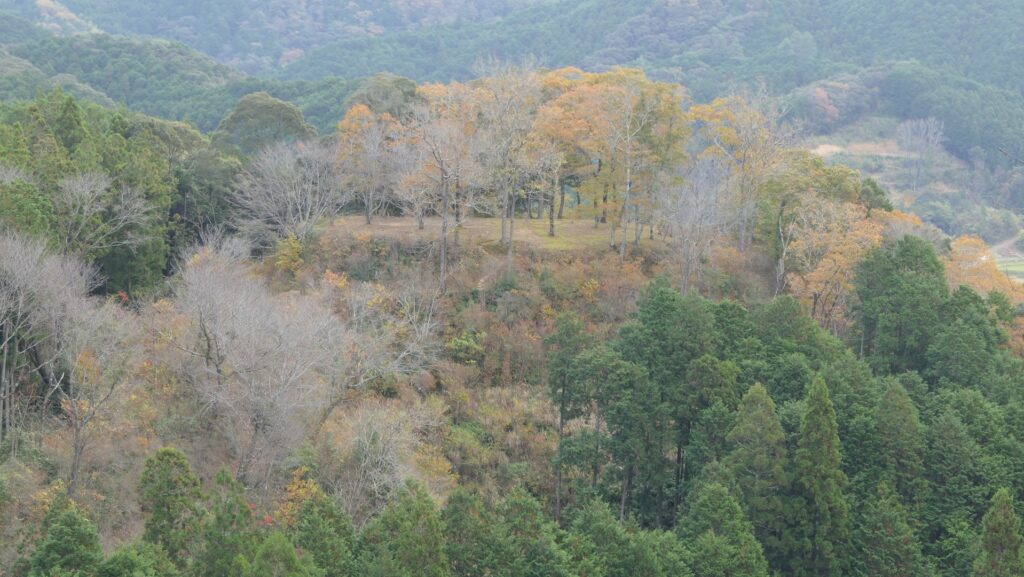
There are also some restored pillars and floor of the Main Hall to show visitors its layout based on the excavation. It was thought that this is where the lord lived and some ceremonies were held in the same hall. In addition, relics like stone foundations and rooftiles, which might have been used for the Main Tower, were discovered in the enclosure.
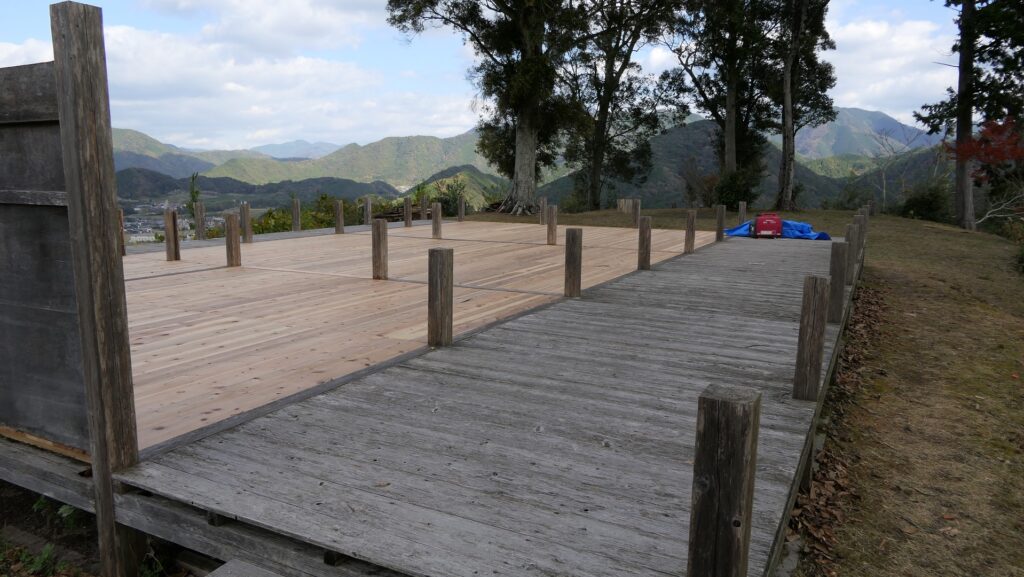
To be continued in “Kagomori Castle Part3”
Back to “Kagomori Castle Part1”

